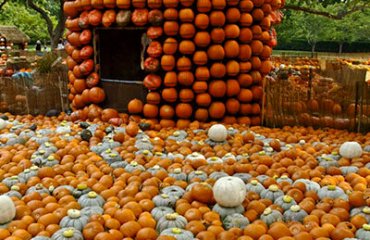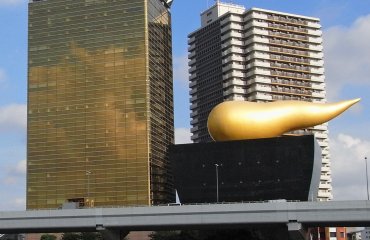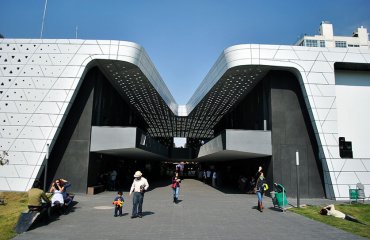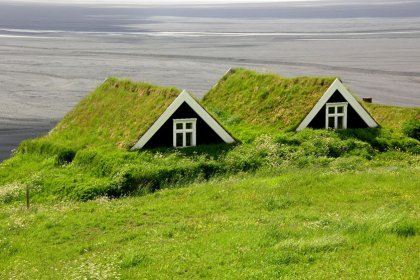
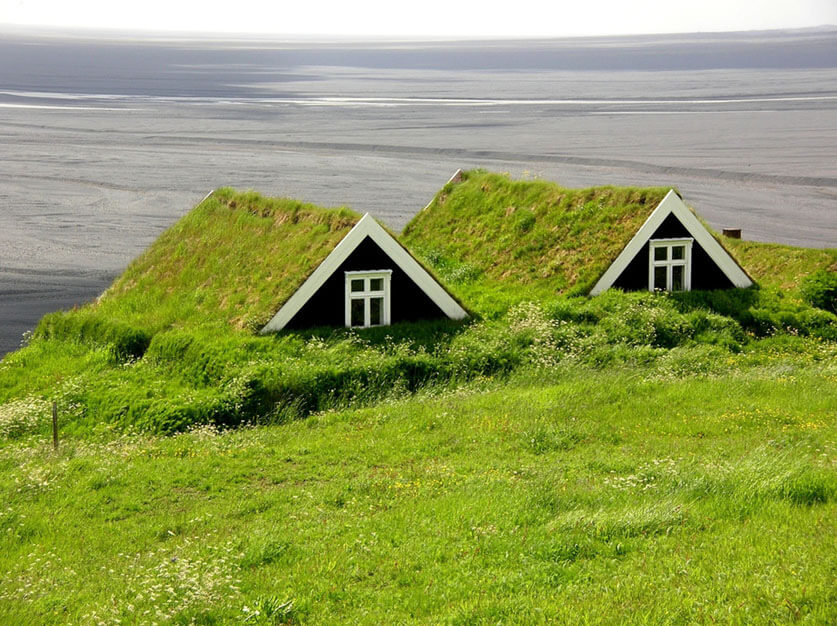
DSCN3813 by Sara Yeomans is licensed under CC BY 2.0
Part of a tradition in Iceland, the Turf House construction method dates back to the Neolithic period. With grass covered rooves, these homes literally blend into the landscape.
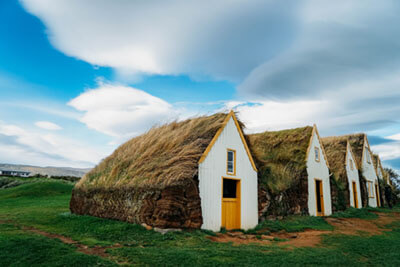
Turf Houses, Glaumbær, Iceland by messicanbeer is licensed under CC BY 2.0
The Turf House tradition came from the Norse and British settlers during the 9th through the 11th centuries. It is thought to have begun due to limited access to timber. Sod, however, was easily accessible and depending on the location would actually last 20 to 70 years before it needed to be replaced!
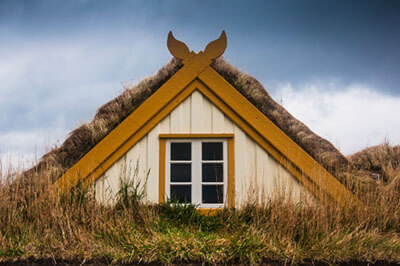
Turf Houses in Glaumbaer by Sarah Nichols is licensed under CC BY-SA 2.0
When Iceland gained independence from Denmark in 1918 Turf Houses were in peril of disappearing. Popular opinion was leaning towards more modern construction methods. Thanks in part to a tourism boom in the 20th-century Turf Houses regained popularity. In 2011 the Turf House Tradition was nominated to be listed as UNESCO world heritage.
Here is a video on youtube that goes over how Turf Houses are built and tours the Islenski Baerinn Turf House museum.

